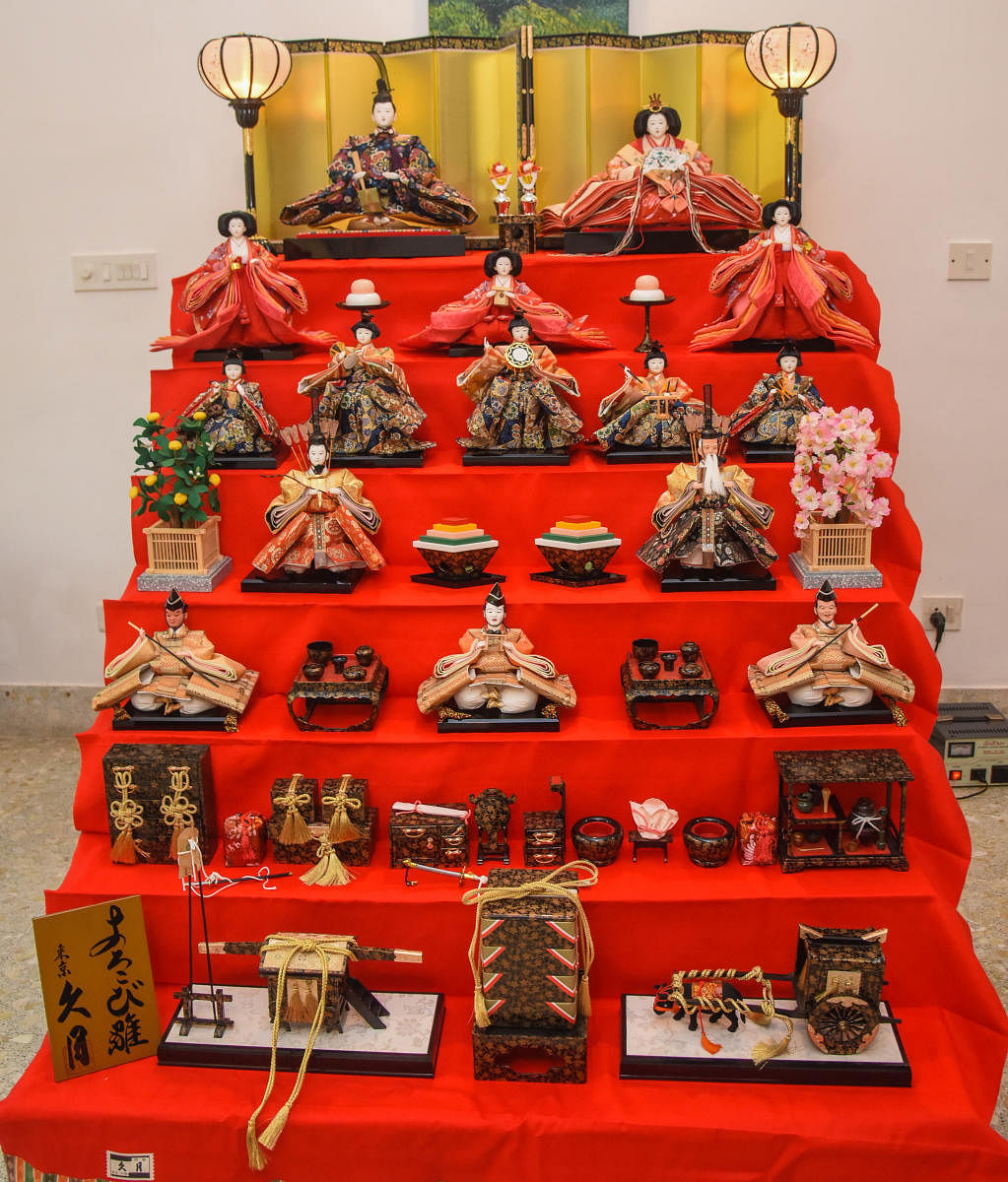
Enter the house of the Japanese Consul-General in Bengaluru and what grabs your attention is a doll display, similar to the ones that mark Dasara festivities in this part of the world.
Traditionally, dolls are dusted and brought out every year in Japan towards the end of February for a doll festival celebrated on March 3. The displays bring to mind the ‘bombe habba’ tradition in Karnataka.
The Japanese have a name for the festival: Hinamatsuri, which means ‘Dolls’ Day’ and ‘Girls’ Day’.
The tradition, which began in the 8th century, was earlier confined to aristocratic homes. It slowly found its way into every household in Japan. “This festival is held to celebrate the girl child and wish her good health and happiness. Families with girl children wait for this festival,” says Sugita Akiko, consul-general of Japan in Bengaluru. She assumed office in June last year.
“What we see here is a wedding theme. This is displayed because it used to be and still is in some rural parts of the country that every household wants to make the girl happy by marrying her off into a wealthy household,” says Sugita.
The doll display is not kept for too long as that is believed to make the daughter marry late. The festival falls in the peach blossom season.
Multi-layered stand
The process of setting up the dolls is elaborate. The stand is covered with a red cloth. Seated on the top row are the male and female doll---the emperor and empress of Japan---with a gold stand as the backdrop.
“The other rows represent ladies of court, musicians, ministers and other attendants. The sixth and seventh tiers hold miniature furniture, tools and carriages which can be used in the household of the newly-weds,” adds Sugita.
This doll tradition is still strong in Japan, especially in joint families. The display gets smaller but the tradition continues in nuclear families. Japan also observes Boy’s Day in May. “There is usually only one male doll in this display. Here, the boy is portrayed as powerful and strong,” Sugita says.
Childhood memories
Sugita is one of three children. She remembers, as a child, the excitement ahead of the doll festival. “We would start decorating the doll ten days before the festival. After the festival, the dolls are neatly wrapped and kept away until next year. The dolls are carefully handed over to the daughters to be passed on to their daughters,” she
explains.